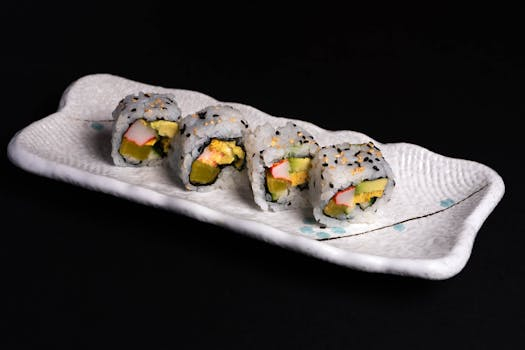Fusion Foods: When Culinary Traditions Collide
Fusion foods have taken the culinary world by storm in recent years. The fusion of two distinct culinary traditions has resulted in an explosion of new and exciting flavor combinations that have transformed the way we eat. Whether it’s the marriage of East and West, North and South, or even merging of completely different cultural cuisines, the result is a tantalizing culinary journey that challenges our palettes and broadens our horizons. In this article, we will explore the fascinating phenomenon of fusion foods and how it has become more than just a culinary trend, but a reflection of our diverse and ever-evolving cultural landscape. 
The Rise of Fusion Foods
The concept of fusion food is not a new one. It can be traced back to ancient trade routes where different cultures came into contact with one another, resulting in the exchange of ingredients and cooking techniques. However, it was in the late 20th century when chefs started to deliberately merge different culinary traditions, giving birth to the fusion food movement. Chefs like Wolfgang Puck, Jean-Georges Vongerichten, and Nobu Matsuhisa pioneered this movement, creating dishes that combined French, Asian, and other global flavors in one plate. Today, fusion food has become a global phenomenon, with restaurants and food trucks all over the world showcasing their own unique take on this culinary trend.
The Fusion of Cultures and Flavors
Food is often described as a reflection of a culture’s unique history, traditions, and values. Therefore, when two distinct culinary cultures come together, the result is not just a fusion of flavors, but also a representation of the merging of cultures. For example, the rise in popularity of Korean-Mexican fusion food in the United States is a result of the growing Korean and Mexican immigrant communities, bringing their traditional flavors to the mainstream. The outcome is dishes like Korean BBQ tacos, kimchi quesadillas, and bulgogi burritos, which pay homage to both cultures while offering a new and unique taste experience.
Combining Techniques and Ingredients
Fusion food is not limited to just the combination of different cuisines, but also the fusion of cooking techniques and ingredients. Chefs are constantly experimenting with new ways to marry different ingredients and cooking methods to create exciting and innovative dishes. For example, a popular fusion dish in some Asian countries is the ramen burger, a combination of a traditional Japanese ramen noodle bun with a Western-style burger patty. This fusion dish not only combines two different cuisines but also reimagines the classic burger in a whole new way.
Beyond the Plate
As fusion foods continue to evolve, it has also extended beyond just the plate and into other aspects of the dining experience. From fusion cocktails to fusion desserts, the boundaries are constantly being pushed to create new and unique taste experiences. The fusion trend has also extended to home cooking, with people experimenting in their own kitchens and sharing their creations on social media. This has led to the rise of fusion food influencers and home cooks, who are constantly pushing the boundaries and inspiring others to try new flavors and combinations.
The Future of Fusion Foods
The fusion food movement shows no signs of slowing down, and the possibilities are endless. With our increasingly diverse and interconnected world, we can only expect to see more fusion dishes and a constant evolution of flavors. However, it is essential for the fusion food trend to stay true to its roots and not simply become a passing fad. The fusion of culinary traditions should continue to be a celebration of culture, creativity, and of course, delicious food.
In conclusion, fusion foods have become more than just a fusion of flavors, but a way to celebrate our diversity and global interconnectedness. So, the next time you’re at a fusion restaurant or trying out a fusion recipe, remember that you’re not just experiencing a unique taste, but also a reflection of our ever-evolving culinary landscape. The fusion food phenomenon is here to stay, and we can’t wait to see where it takes us next.











